The wood in your standard furniture has been sawn, planed, peeled, and sanded into uniform planks, panels, and boards. That makes the furniture easier to build, but it obliterates virtually any sign that the material once came from trees growing in a forest.
Not so with this console table. Its top is fashioned from two 2-inch-thick slabs sliced from the trunk of a Norway maple. The tree’s “live edges” are basically untouched — only the bark was removed — so they retain the natural undulations and wormholes that give this piece its distinctive character.
In this article and video, we’ll walk you through how to build a similar one yourself.
Selecting the Right Wood Slab
Local sawmills can be good sources of live-edge slabs; that’s where This Old House general contractor Tom Silva bought the ones for this project. You can also find them online in various sizes and species. Whatever the source, pay close attention to these factors:
- Wood species: Different types of wood have unique characteristics. Hardwoods like maple and walnut are famous for their durability and stunning grain patterns.
- Slab thickness: A thicker slab will provide more stability and a robust appearance.
- Moisture content: Aim for a moisture content between 6% and 8%, which can be measured using a moisture meter.
- Overall dimensions: The size of your slab should match the intended use and space available.
Kiln-dried slabs are preferable as they’re less likely to warp or split over time. It’s also important to acclimate the slab to your indoor environment for a few weeks before starting the project.
Tools Needed to Turn a Wood Slab Into a Table
Tools required for this project include:
- Track saw
- Chisel
- Hammer
- Reciprocating saw
- Random orbit sander
- Bar clamps
- Keyhole saw
- Drill/driver
- Plunge router
- Impact driver
- Paint bucket
- Soft bristle brush
Step-by-Step Instructions for Building a Wood Slab Table
You’ll need some basic carpentry skills, but the end result will be a stunning conversation piece for your home.
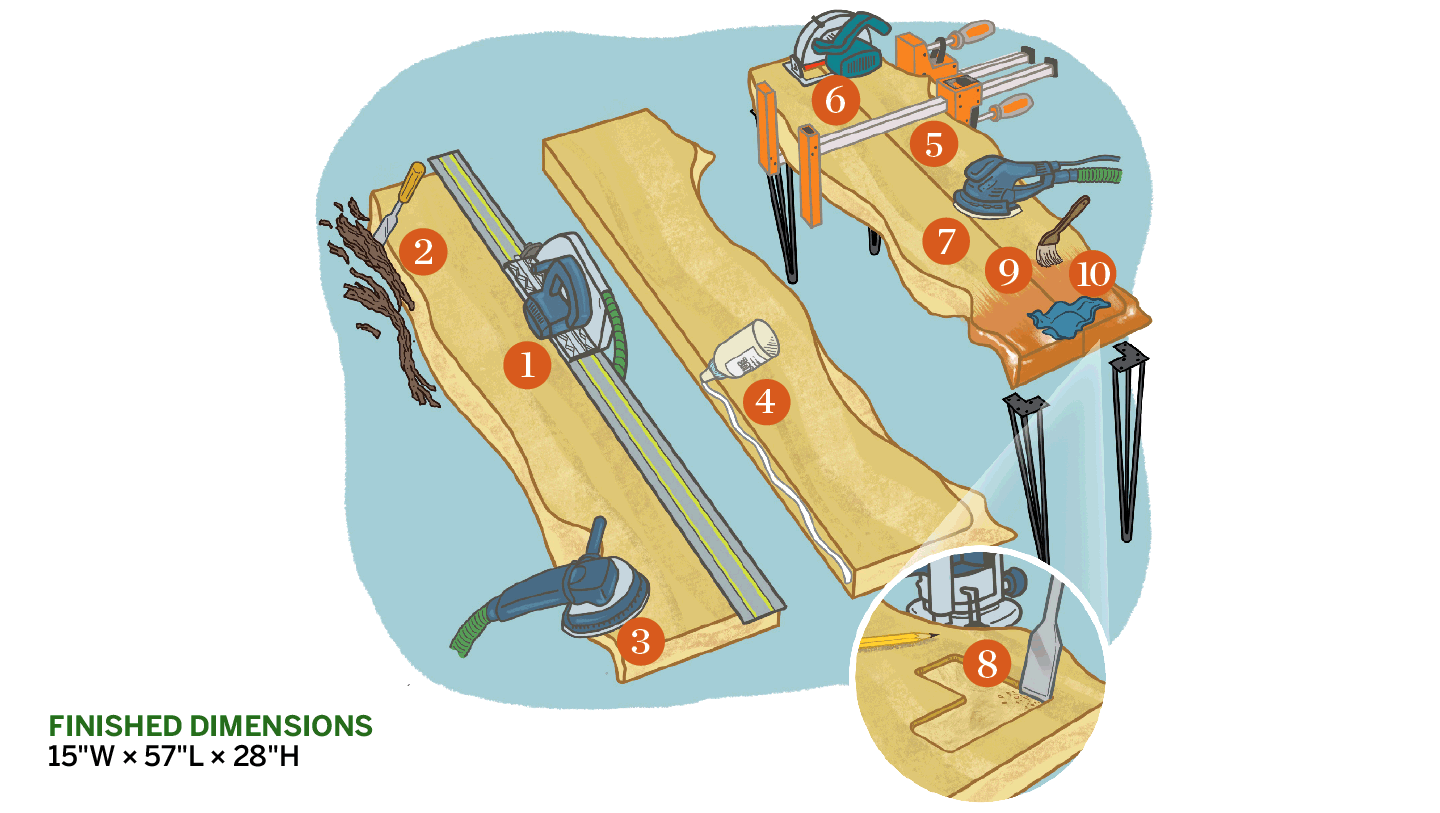
Step 1: Trim Two Edges
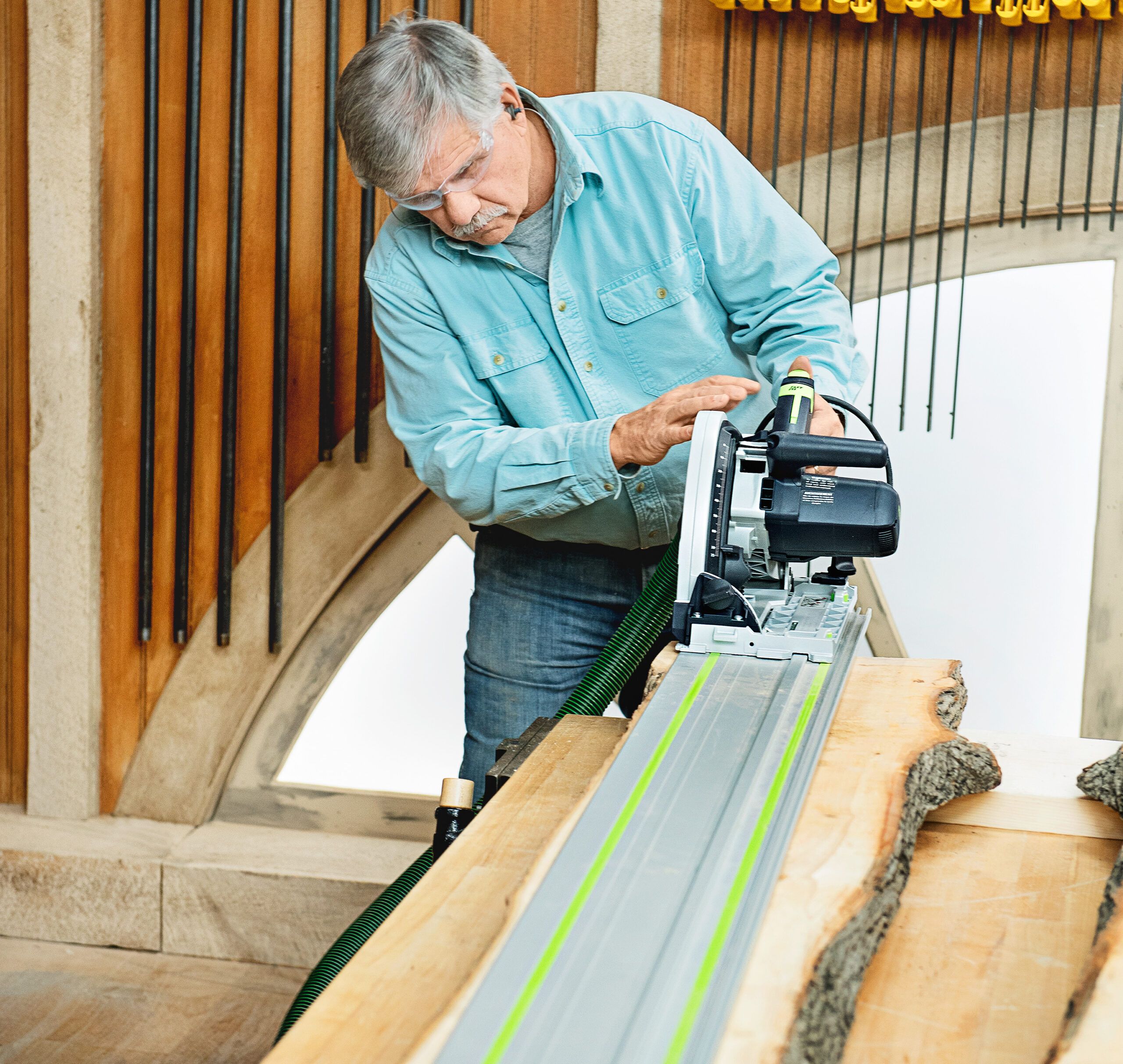
Determine whether the live edge will face up or down. Here, Tom chose “up.” Then decide which live edges you want to keep. Slice off the others using a track saw, as shown, or a circular saw and edge guide. Clean, straight rip cuts are a must.
Step 2: Remove the Bark
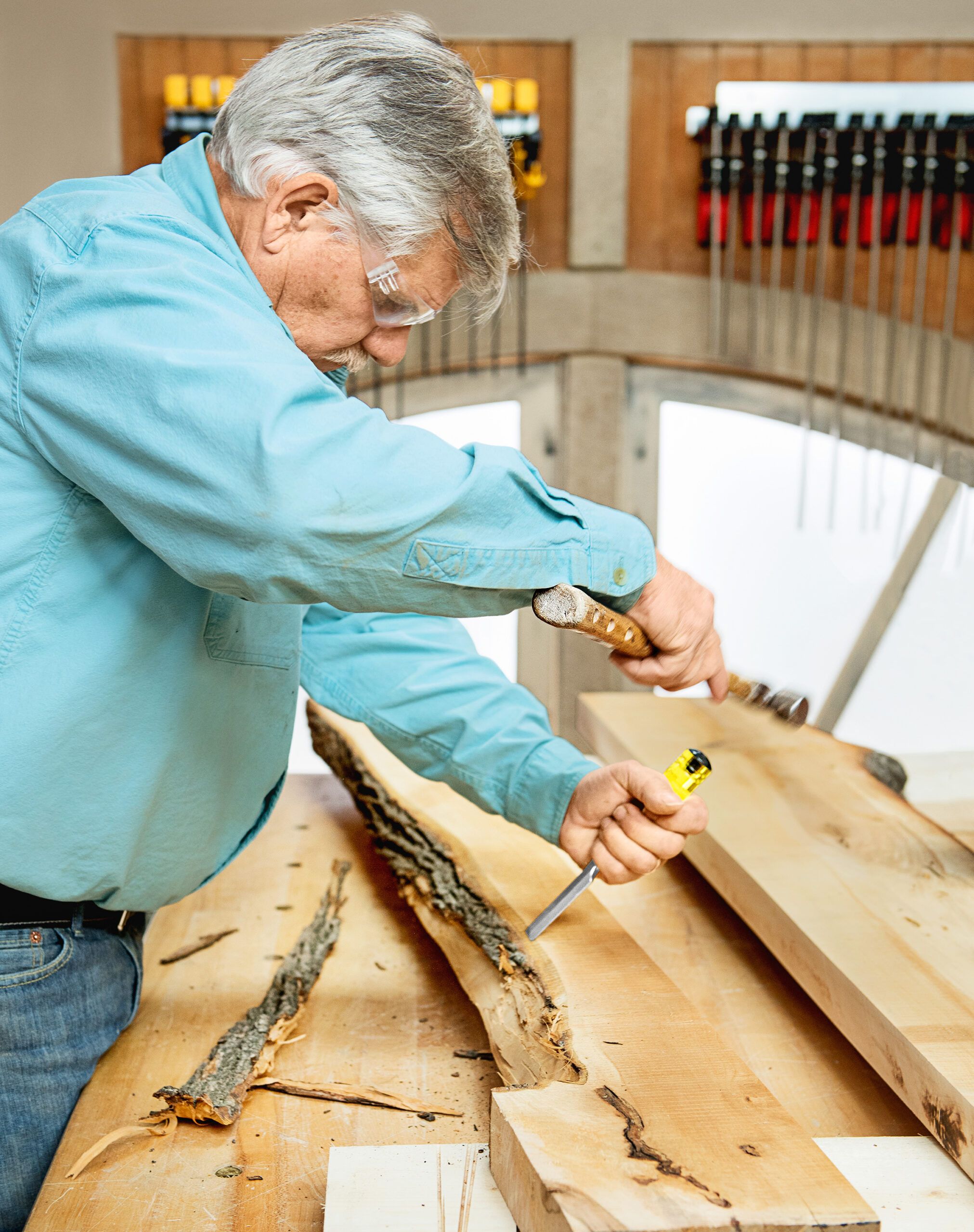
Tree bark won’t remain attached for long, so it’s best to take it off. Set a chisel at the line between the bark and the wood, as shown, and tap it with a hammer. The bark should come loose in long strips.
Step 3: Smooth the Edges
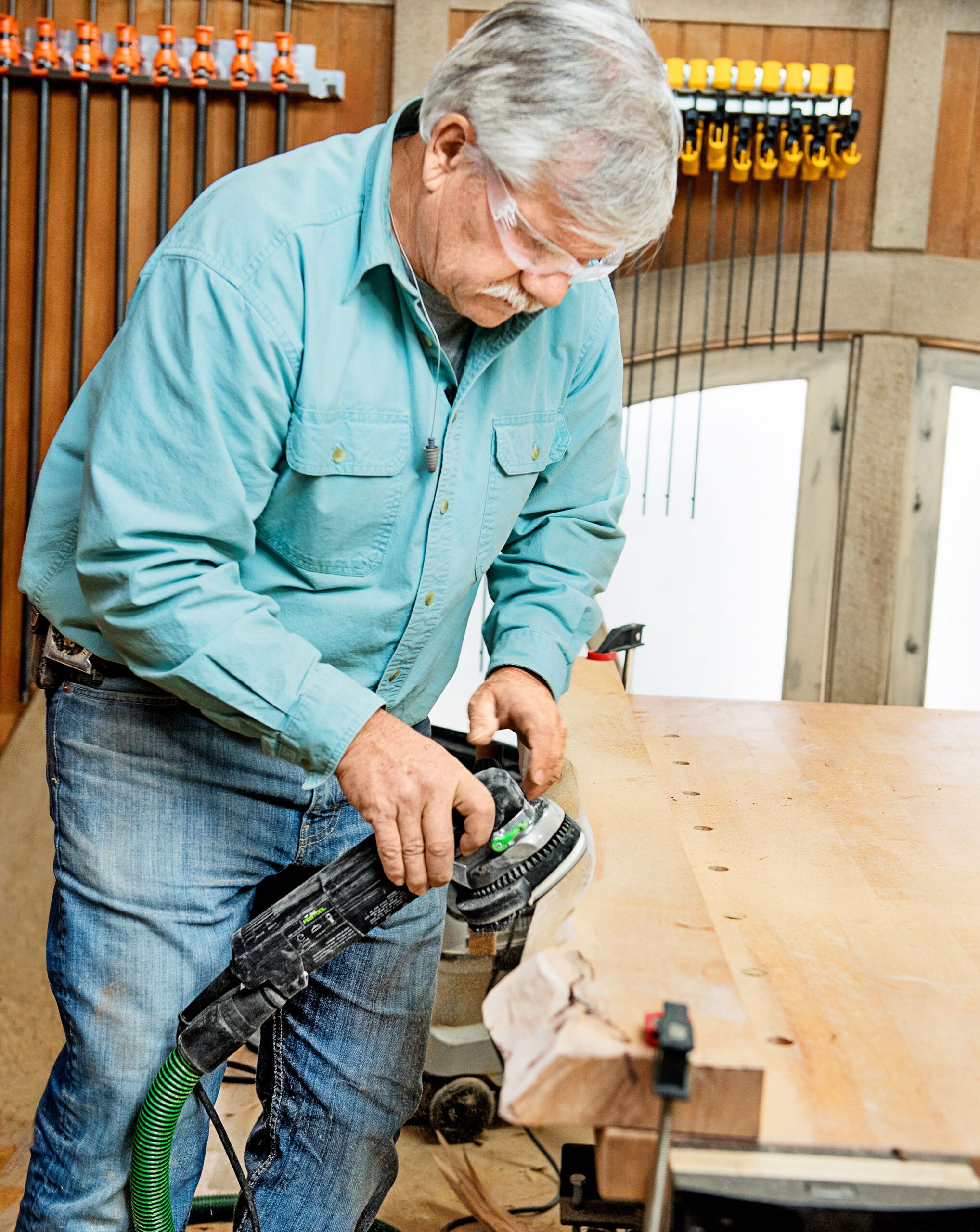
Starting with 50-grit paper on a soft pad, sand off the remaining bark and begin smoothing the wood. Here, Tom uses a rotary sander attached to a vacuum. Take care not to remove the surface irregularities that give a live edge its unique appearance.
Step 4: Apply the Glue
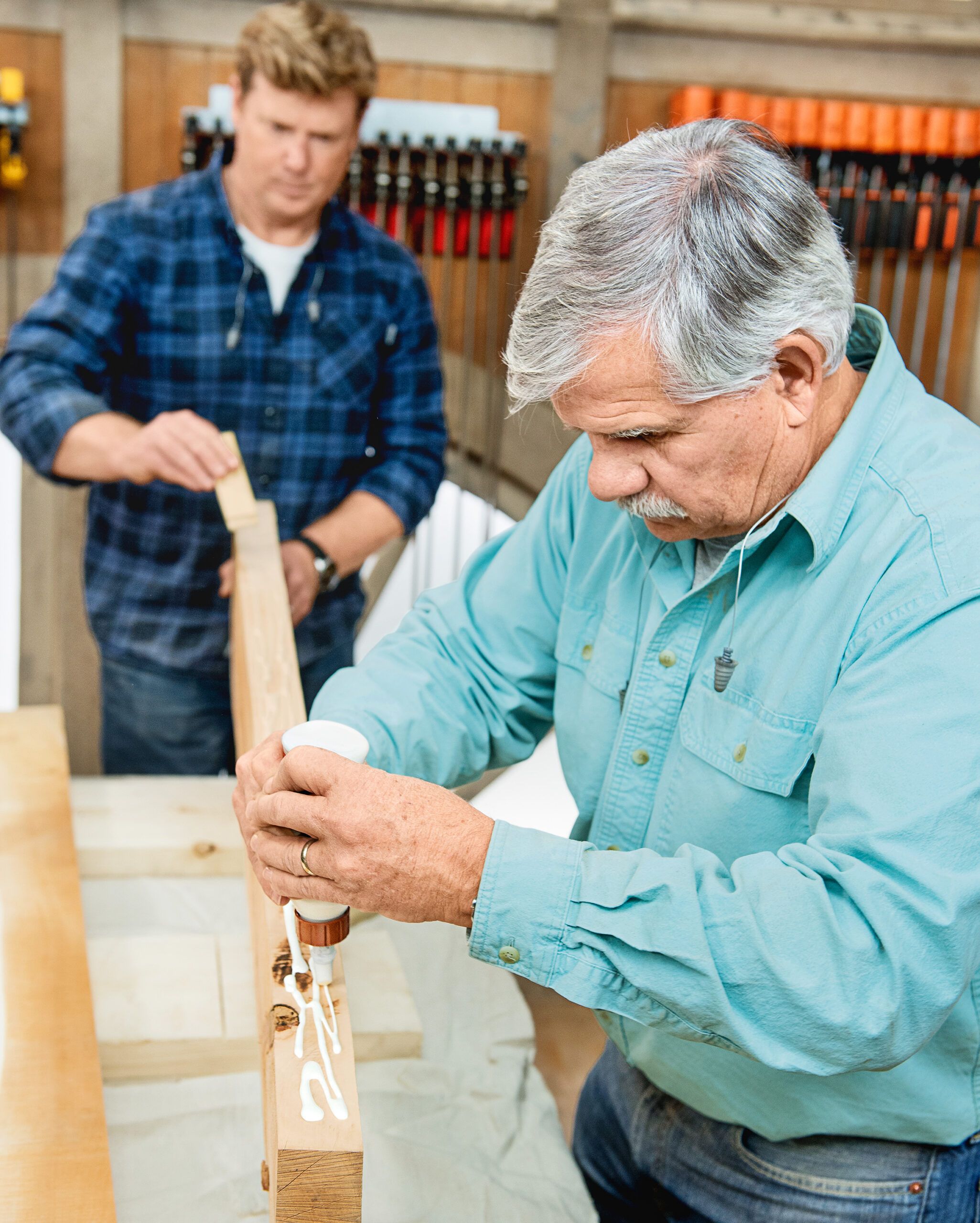
Cover the workbench against glue drips and rest both boards face up on 2x supports. With bar clamps at the ready, squeeze wood glue onto the cut edge of one board and spread it evenly from end to end, as shown. Wipe away any glue drips on the board face with a wet cloth.
Step 5: Clamp Them Together
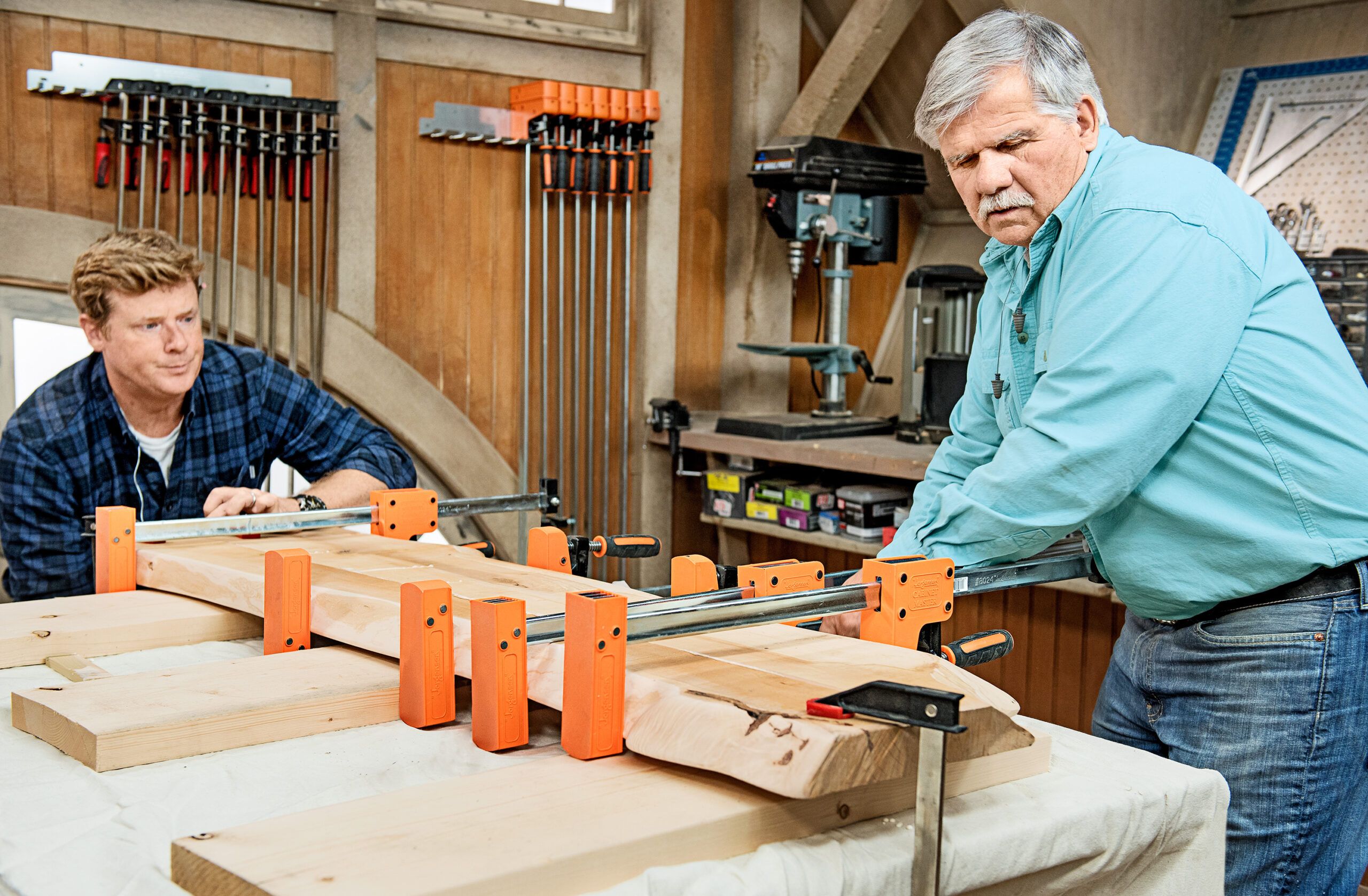
Line up the boards’ cut edges and put the clamps’ bars above and under the top to prevent cupping. Wipe up the excess glue and wait at least a half hour before removing the clamps. Trim the ends with a circular saw. Smooth the top and edges with a random-orbit sander and, in order, 80-, 120-, 150-, 180-, and 220-grit papers.
Step 6: Make a Leveling Jig
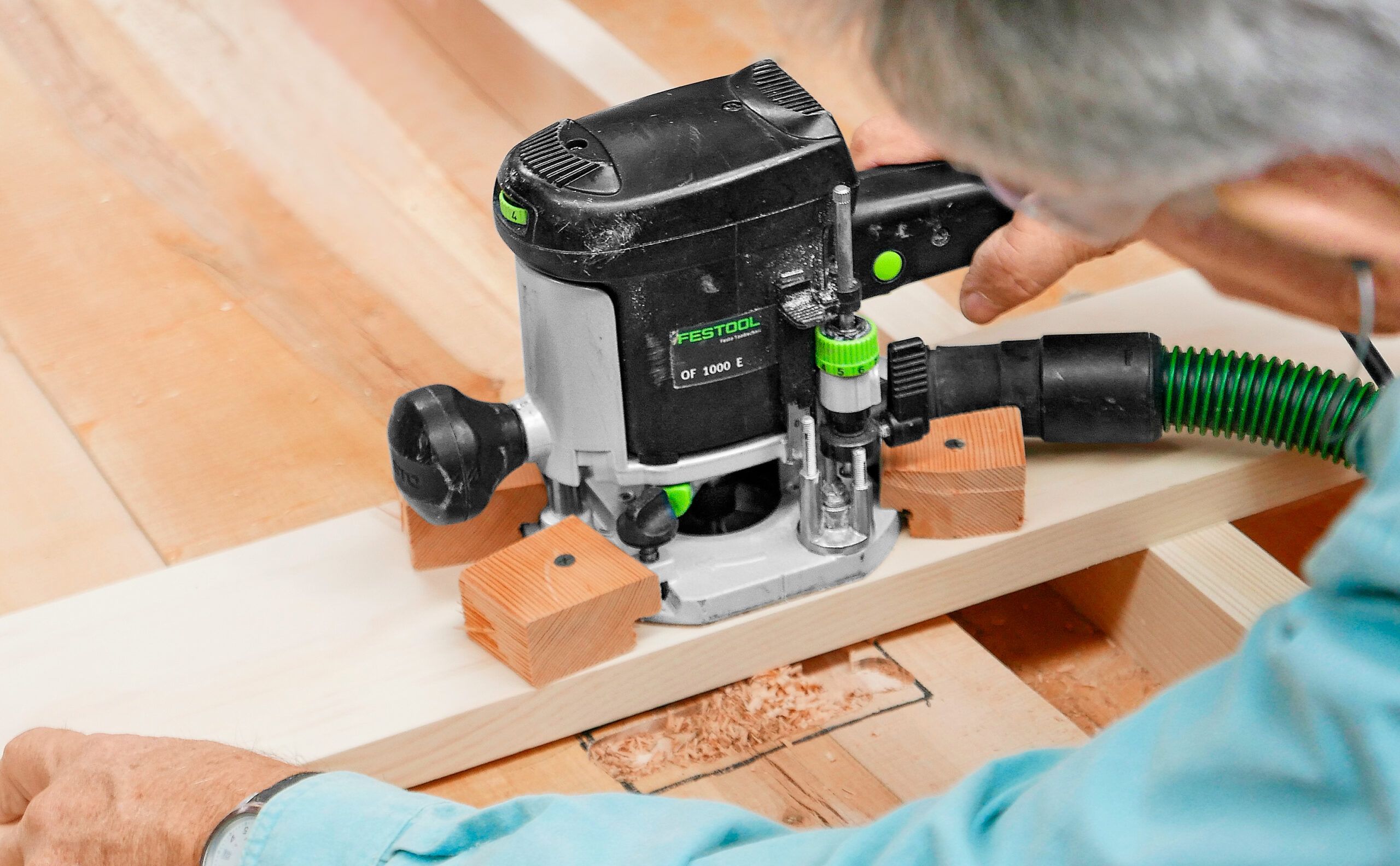
- Rails Each one should be exactly the same width (a bit wider than the top’s thickness), dead flat on both edges, and about a foot longer than the top. Clamp them to the bench on either side of the top.
- Router sled Make it out of a 1-inch-thick board a bit wider than the router base and twice as long as the span between the rails. Using a hole saw, cut a 2-inch hole in the sled’s center—large enough to let you see the spinning bit.
- Router mount Center the chuck over the hole and attach the router base to the sled. Here, Tom used notched 2x scraps to hold the base in place.
Step 7: Sand the Top
Give the top surface a sanding to ensure it’s completely smooth. This will be important for the finishing steps below.
Step 8: Rout the Leg Mortises
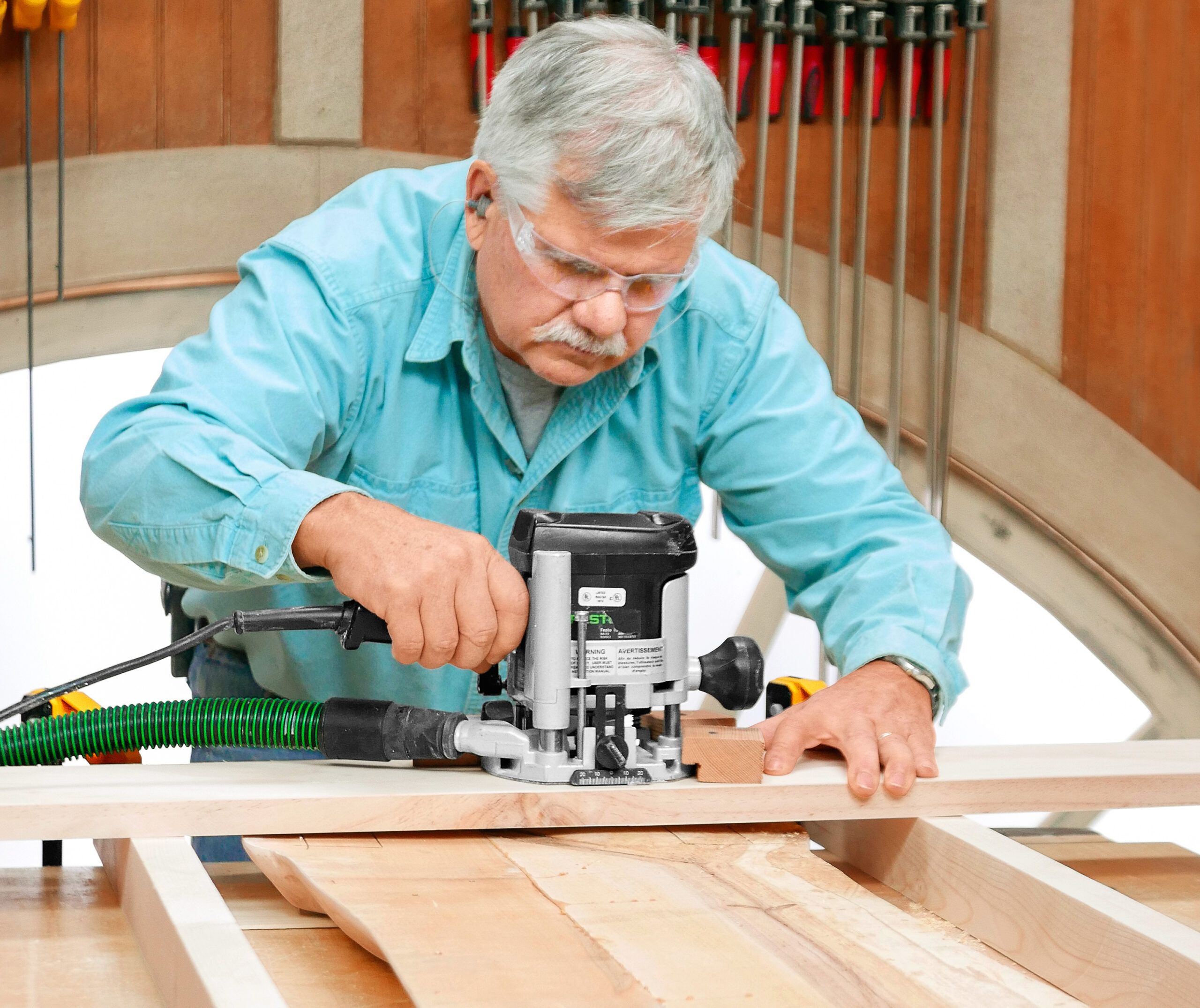
The underside of the tabletop isn’t milled flat, so it could rock if the legs were just screwed to it directly. To prevent that, Tom made a leveling jig for a plunge router to cut mortises for the legs’ bases all on the same plane.
To use the jig, turn the slab upside down and shim it up to just below the jig’s rails. Next, hold each leg in position and trace around its base. Place the jig’s sled over one base outline, lower the router, and lock its depth when the bit touches wood.
If the bit clears the wood at the next outline, unlock and lower the router again and relock it. But if the bit lifts the sled above the rails, don’t change the depth setting; move to the next outline. Repeat at the other outlines to find the lowest depth setting. Rout all the mortises to that depth by moving the sled, as shown. Then, square the mortise corners.
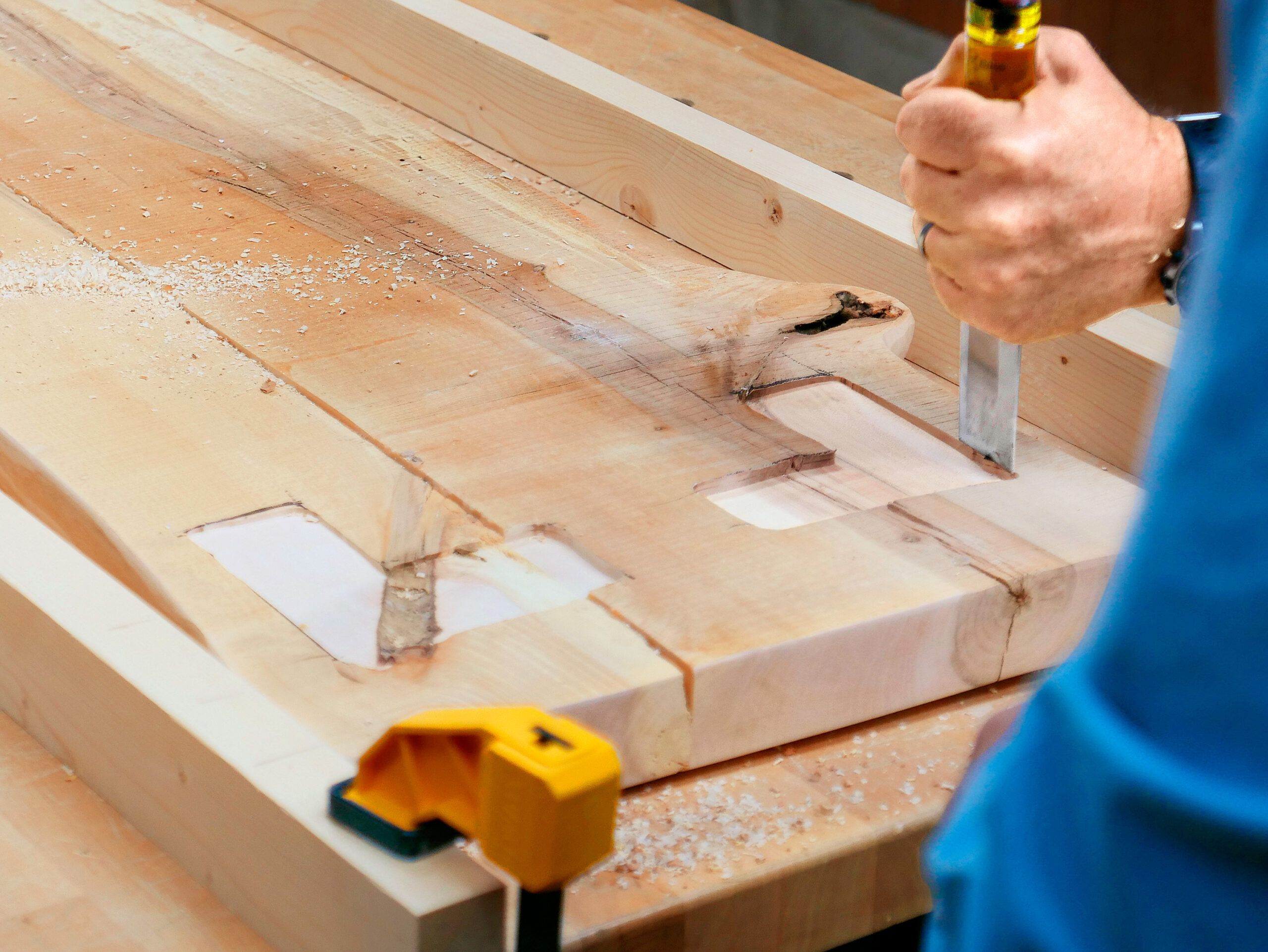
To square up the rounded corners left by the router bit, hold a sharp chisel, as shown, with the bevel facing toward the mortise and the blade in line with the mortise edge. Give the chisel a tap, then do the same on the adjacent side to create a 90-degree corner. Repeat with the other mortises.
Step 9: Seal the Top
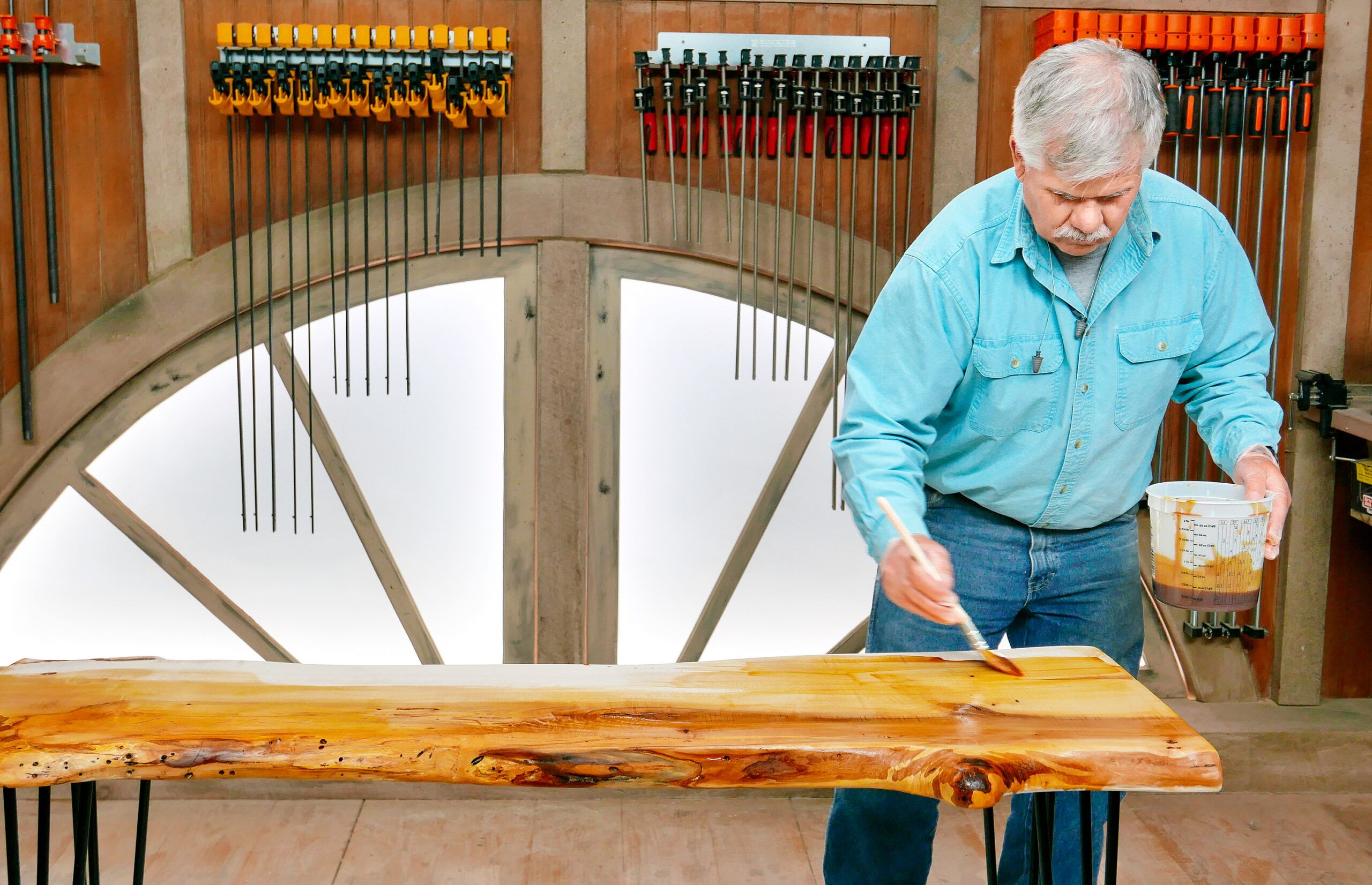
Wipe the top and edges with denatured alcohol to remove any dust. Brush on a coat of amber shellac, as shown, to seal the wood and give it a warm hue. When the finish is dry, in about 30 minutes, lightly hand-sand with 320-grit paper and top-coat with a more durable finish, as explained in the next step.
Step 10: Oil the Top
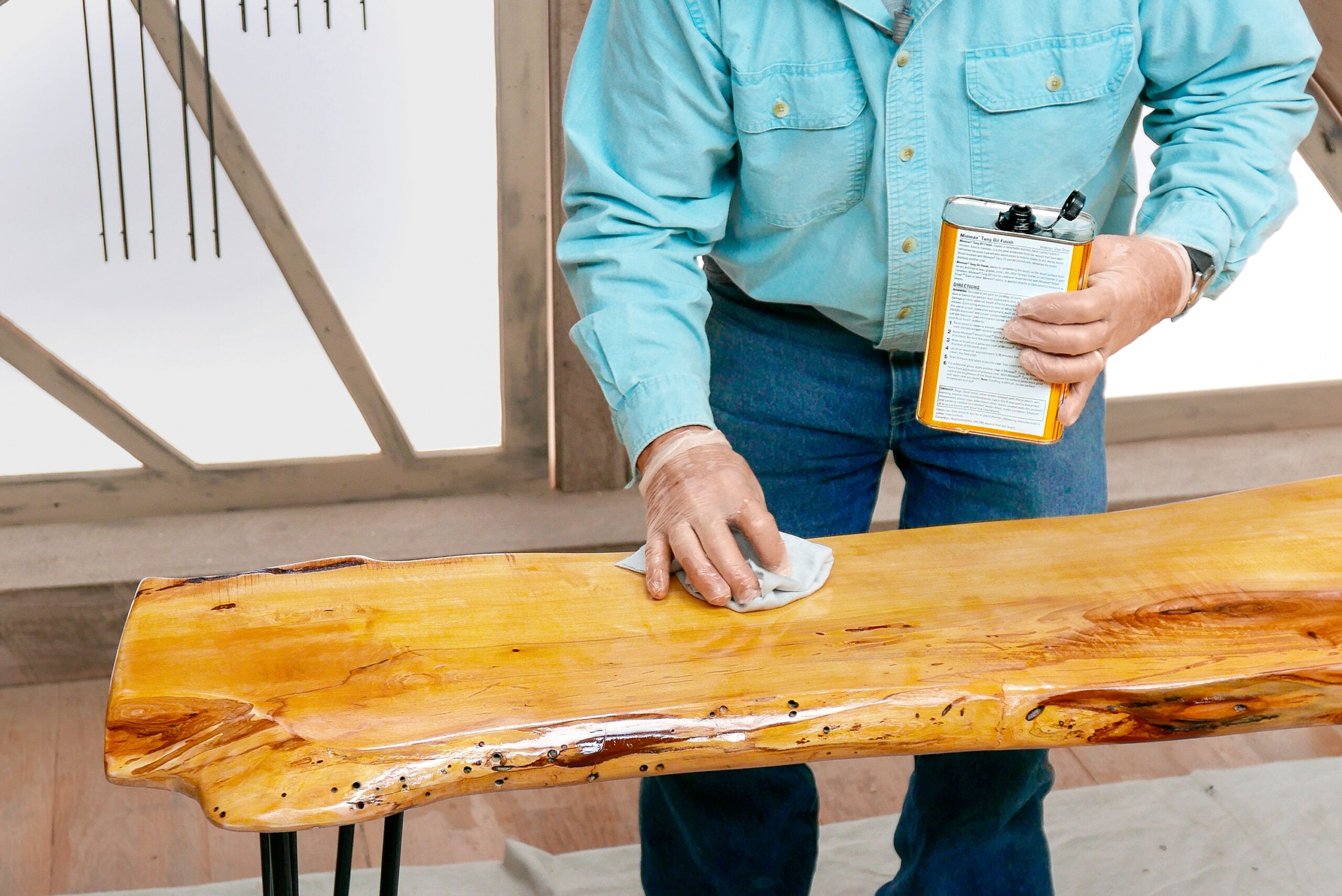
Wearing disposable gloves, wipe off the sanding dust with a cloth dampened in mineral spirits. Here, Tom uses a second cloth to apply a coat of tung oil/varnish blend over the shellac. After 5 to 10 minutes, buff the oil evenly with a third cloth. To prevent spontaneous combustion, dispose of all used cloths in a bucket filled with water.
Wait 24 hours before applying and buffing out a second coat of oil. Additional coats are optional, but will increase gloss and protection. If you’d rather use a finish other than tung oil, that’s fine; shellac is compatible with them all. Coat the underside in the same way as the top to limit seasonal wood movement.
Step 11: Attach the Legs
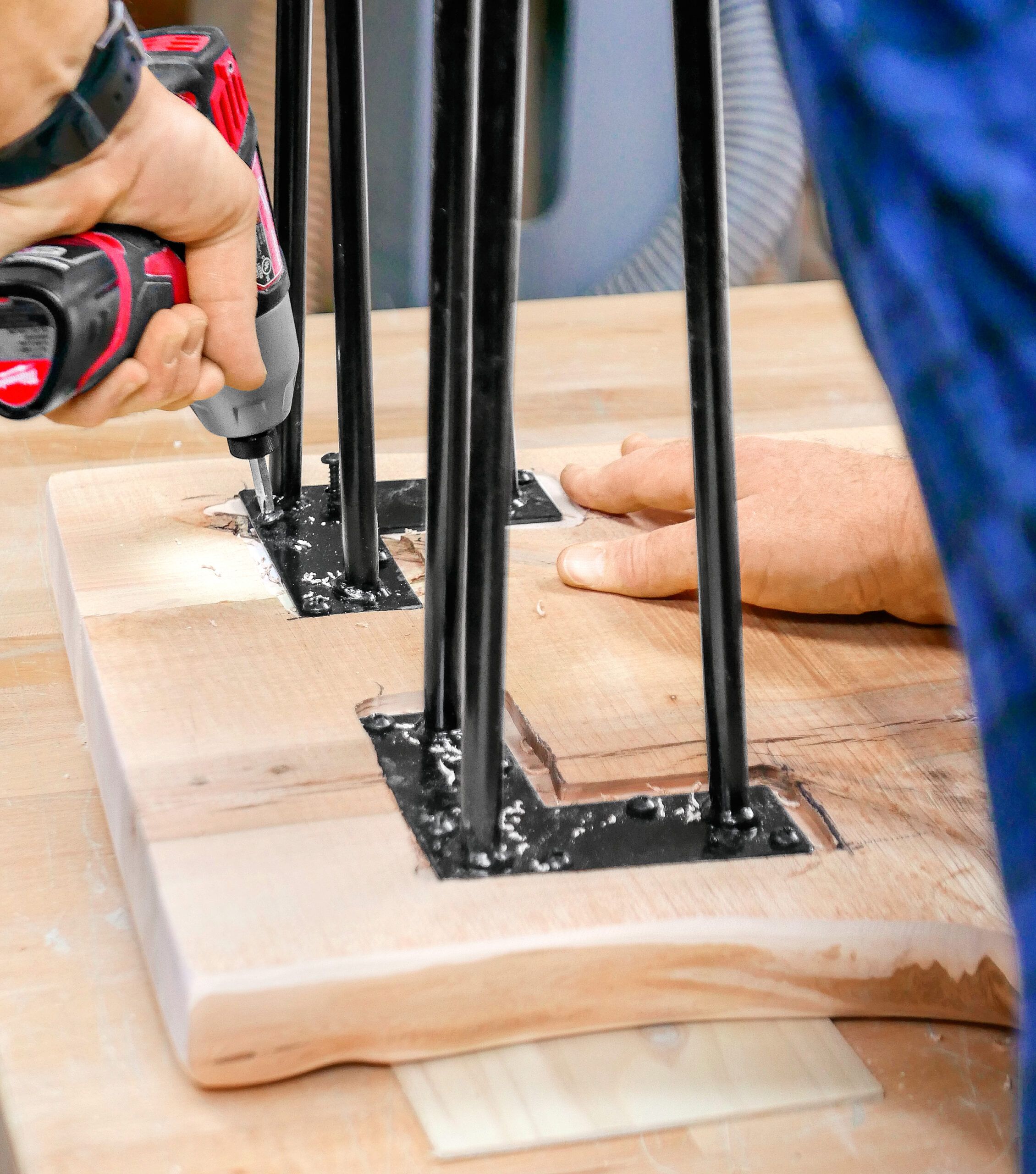
Set the base of each leg into an L-shaped mortise and drill a pilot hole at each mounting hole in the leg base. Using an impact driver, fasten all the 3⁄4-inch pan-head screws provided with the hairpin legs. The table should be steady when set upright.
Adding a Shelf to Your Wood Slab Table
Depending on the type of legs you choose, consider adding a shelf below the tabletop. This feature can provide extra storage space for books and decorative items. Follow these steps to add a shelf to your table:
- Measure and cut the shelf material: Choose a piece of wood that complements the tabletop and cut it to the desired size.
- Attach shelf supports: Securely fasten brackets or wooden supports to the inside of the table legs.
- Install the shelf: Place the shelf on the supports and ensure it is level and securely attached.
Adding a shelf not only increases the storage capacity of your table but also adds visual interest and functionality.
Our Conclusion
Creating a wood slab table is a rewarding project that yields a unique piece of furniture. By selecting the right slab, preparing the wood, and choosing appropriate legs and finishes, you can craft a table that reflects your style and enhances your living space. This customizable process allows for endless design possibilities, from rustic to modern, while offering the satisfaction of working with natural materials. The result is a functional, conversation-starting piece that brings warmth and character to your home.
